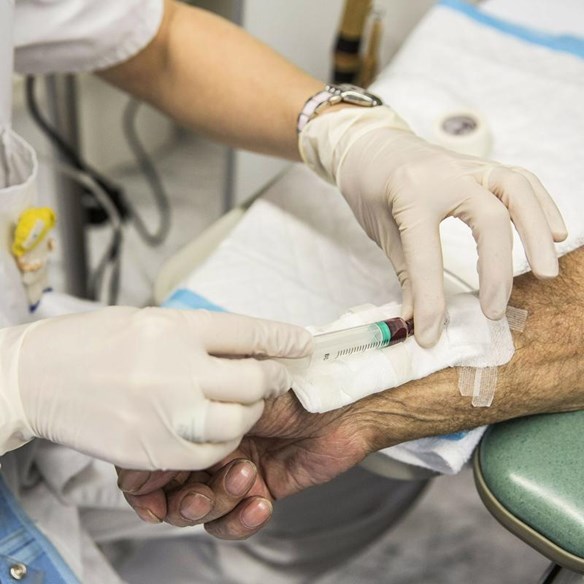Evidence-based medicine (EBM) is such a logical approach to healthcare that now it is difficult to imagine viable alternatives that don't prioritize the acquisition, analysis and application of rigorous evidence when evaluating and managing patients. However, such stances were common for years in the form of humorism and a heavy reliance on anecdotes, clinical experience, and testimonials. Even today, high-quality evidence still does not always win out in everyday practice.
Understanding Medicine Prior to EBM
Let's start with humorism. Humorism was based on the unfounded, but widely accepted, idea that health and temperament were products of the body's internal balance of four key fluids, called "humors." The rise of scientific medical research in the 1800s ended humorism.
Whether dictated by humorism or another school of thought, many common medical treatments across the centuries (e.g., bloodletting, routine childhood tonsillectomies, use of sulfonylureas to treat diabetics) were widely performed, despite lacking decisive supporting evidence. Even recent medications, such as some hepatitis C drugs have sparked controversy over their approval processes, which in some cases included nonrandomized clinical trials. This does not meet the standard for modern evaluative rigor.
EBM is intended to eliminate such blind spots in healthcare. It is ideally the combination of the best available medical evidence and research, clinical expertise and experience, and a patient's values and preferences. But what is acceptable as "evidence"?

EBM has led to more effective forms of treatment.
The EBM Pyramid and Its Different Evidentiary Tiers
The gold standard for evidence for EBM - randomized controlled trials (RCTs) - only emerged in the 20th century. RCTs produce higher-quality results than non-randomized trials, cohort and case studies, expert opinions and anecdotes.
How did RCTs become the preferred evidence type? Start in the 1950s, when many new classes of medications, including antibiotics and antihypertensives, were first entering mass production. While a lot of these drugs proved to be game-changers in public health, it was difficult for regulators and physicians to keep up with the claims made by manufacturers. As a result, legislative and administrative action in the U.S. between 1962 and 1970 made RCTs central to the approval of new pharmaceuticals and their indications.
Doctors may – and do – use other sources of evidence in addition to RCTs, guided by the evidentiary pyramid designed by physician David Sackett.
This pyramid currently has six levels, with RCTs at the top and less reliable forms of evidence below it in descending order of evidence quality:
- Level I: One or more RCTs.
- Level II-1: Controlled trials without randomization.
- Level II-2: Cohorts and case-control studies.
- Level II-3: Multiple time series and observational studies.
- Level III: Opinions from experts, based on experience, committee reports or other studies.
- Level IV: Personal anecdotes.
The rise of electronic databases, online medical journals and cloud computing infrastructure have made access to up-to-date medical research, including RCTs, simpler than ever. These technologies have been as instrumental to the continual progress of EBM as early scientific medical research was to the abandonment of humorism.
Specifically, they helped shorten the lag time between researchers identifying potentially effective treatments in trials and when those treatments enter mainstream practice. For example, both thrombylotic therapy and aspirin took almost a decade to become widely accepted as mitigators of acute myocardial infarctions in the late 20th century.
The Benefits and Limits of RCTs in EBM
RCTs help remove bias and subjectivity from medicine while bringing more statistical rigor to the table; hence, their placement at the pinnacle of Sackett's pyramid. They also ensure more consistent practice across locations and populations. Prioritizing them helps payers, providers and patients confidently choose appropriate treatments while avoiding some of the problems associated with unproven treatments.


EBM removes gaps in treatment preferences. At the same time, evidence gleaned from RCTs applies to only 10 to 40 percent of diagnoses, procedures and treatments that many clinicians perform, according to Health Catalyst. Their limitations are visible in realms such as family medicine, in which vague patient-supplied information can make actual problems hard to define, and in psychiatry, which relies on a diverse set of treatments:
- One study published in The New England Journal of Medicine revealed a gap between the use of RCTs for psychotropic drugs and psychotherapy, with the latter having a much weaker RCT base than the former.
- There is also difficulty in designing effective RCTs - which can take years to complete - for rapidly evolving therapies. The changes in the types of stents used in angioplasties in the 2000s resulted in some RCTs about older metal stents being outdated prior to their publication.
- Some RCT findings are instantly contested, due to pharmaceutical manufacturer objections or public controversy over their designs. Sometimes, this leads to unexpected outcomes, such as the early diabetes treatment tolbutamide seeing increased sales in the wake of an RCT linking it to cardiovascular mortality.
Accordingly, reliance on additional sources of information, such as observed aggregate data (Level 2), is often necessary when implementing EBM. RCTs are still the reference standard for EBM, but medical professionals and payers will inevitably enter situations requiring more than just a look at RCT results. Having a general, replicable protocol for EBM as well as well-established clinical guidelines is essential for successfully navigating these scenarios.
How EBM Can be Used in Practice
With those requirements in mind, what does EBM look like in practice? A basic process would follow this sequence:
- Problem definition: Through clinical questions, the practitioner tries to gain accurate information about the medical issue at hand. The PICO (Patient or problem, Intervention, Comparison, Outcome) format is useful for establishing who and what are being treated, which interventions (e.g., medications, surgeries, etc.) are potentially appropriate, how those options stack up against each other and which consequences and outcomes are desired.
- Evidence gathering: At this stage, evidence is compiled and sorted based on its validity, relevance, comprehensiveness and accessibility. The Sackett pyramid helps guide which sources and types of evidence are sought.
- Evaluation of findings: Not all evidence, even if is high-quality, is considered in every case. Providers and payers must decide if the information they have gathered will help guide acceptable outcome for specific patients. Doing so is necessary in light of the sheer volume of new articles and studies that are regularly published.
- Applying evidence to the patient's case: Providers determine similarities between the patients evaluated in research and those in their practice, considering any alternatives, understanding adverse reactions, and aligning outcomes with patient values.
- Assessment of EBM practice: Practitioners must determine whether the applied evidence produced results similar to what was observed in RCTs or other studies and, if not, what might be changed to improve the process down the line.
The ultimate goal is safe, effective care on a track of continual improvement. This 5-step process provides a general outline for EBM, one that can be filled in with details from the many constantly evolving EBM guidelines. For starters, these frameworks help model healthcare utilization, estimate claim costs and adjust national averages for different regions, reimbursement structures and insurance plan features. In other words, they help when making informed, expert decisions across all clinical domains.
EBM as an Ever-evolving Framework of Practice
EBM first emerged as a safer and more scientific successor to older approaches of medicine that emphasized ineffective and sometimes dangerous treatments, with a major disconnect between research and practice. It allows for the use of many types of evidence, but prioritizes RCTs over others because of their rigor.
Healthcare professionals must incorporate a variety of evidentiary sources in practice and as such they rely on a variety of industry-accepted guidelines for evaluating treatments, conducting utilization review and ensuring that everyone has access to high-quality healthcare.
Working with an experienced partner such as Advanced Medical Reviews (AMR) will further strengthen your EBM efforts on these fronts. As Jennifer Crowley, Clinical Quality RN at AMR, explains, "Whether a physician-level peer review or a clinical quality review by one of our UM nurses, all of our work requires knowledge of and adherence to industry-accepted clinical guidelines. Technology has made accessing and referencing these guidelines much more manageable and reliable, coupled with AMR's portal that was designed to trigger reviewers to consult and reference guidelines for every determination they make." We will look at some of the standards in more detail in a subsequent post.
Sign up for Updates:
Privacy Details
By submitting this form, you are consenting to receive marketing emails from: Advanced Medical Reviews, LLC. You can revoke your consent to receive emails at any time by using the Unsubscribe link, found at the bottom of every email.
